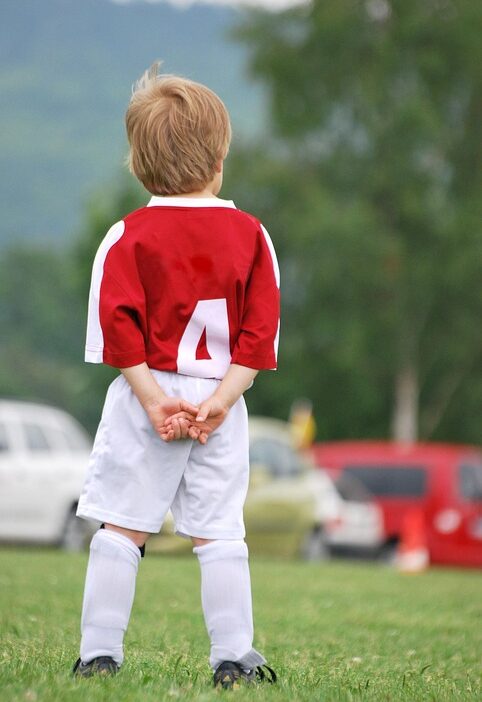In the high-octane world of sports, ensuring player safety and longevity is paramount. Athletes face a myriad of physical stresses and strains, making injury prevention and recovery crucial components of their training regimen. The science behind these processes incorporates biomechanics, nutrition, psychology, and rehabilitation techniques. Understanding how these elements work together can help athletes maintain peak performance while minimizing the risk of injury.
The Importance of Injury Prevention
Injury prevention is the first line of defense in safeguarding athletes. It involves a mix of training techniques designed to strengthen the body, improve flexibility, and enhance overall biomechanics.
1. Biomechanics and Movement Patterns
Proper biomechanics—derived from understanding how the body moves—is foundational in preventing injuries. Training programs focus on teaching athletes optimal movement patterns, thereby reducing undue stress on muscles and joints. For instance, an effective warm-up routine activates key muscles, while drills can emphasize correct posture and alignment.
2. Strength and Conditioning
A well-structured strength and conditioning program can improve an athlete’s physical resilience. Emphasizing core strength, agility, and flexibility can prepare the body for the physical demands of the sport. Regular strength training, particularly for underused muscle groups, can help counteract imbalances that often lead to injury.
3. Education on Injury Risks
Athletes should be educated about common injuries specific to their sports, as well as risk factors such as fatigue, previous injuries, and improper techniques. Awareness empowers players to self-regulate, helping them recognize when they might be pushing their bodies beyond safe limits.
4. Rest and Recovery Protocols
Balancing training loads with adequate recovery is critical. Overtraining can lead to fatigue and increased susceptibility to injuries. Implementing rest days and lighter training sessions can help maintain performance while allowing the body the time it needs to repair and strengthen.
The Recovery Process
Even with the best preventative measures, injuries can still occur. The recovery process is just as crucial as prevention for an athlete’s career longevity.
1. Immediate Response
When an injury occurs, the first steps are critical. The R.I.C.E. method (Rest, Ice, Compression, Elevation) plays a significant role in the inflammation control and initial recovery period. Immediate medical assessments are vital for diagnosing the severity of the injury and determining the appropriate course of action.
2. Rehabilitation Strategies
Rehabilitation can vary widely based on the injury type and severity. Physio-therapeutic techniques, such as manual therapy, ultrasound, and electrotherapy, aim to restore motion, strength, and function to the injured area. Custom rehab programs that consider an athlete’s specific needs can expedite recovery.
3. Psychological Support
Injuries can take a toll on an athlete’s mental health, leading to anxiety and depression. Incorporating psychological support during recovery is crucial. Techniques such as mental visualization, goal-setting, and mindfulness can help athletes stay motivated and focused during rehabilitation.
4. Gradual Return to Play
Once an athlete has recovered physically, a structured, phased return to play program is necessary. This includes progressing through various stages of intensity, allowing the body to adapt gradually. Monitoring performance metrics during this phase is vital to prevent re-injury and ensure a successful transition back into competitive play.
The Role of Nutrition
Nutrition plays a vital and often overlooked role in both injury prevention and recovery. Proper nutrition can improve athletic performance, speed up the healing process, and strengthen the immune system.
1. Macronutrients and Micronutrients
Athletes should prioritize a balanced diet rich in proteins, carbohydrates, and healthy fats to fuel their workouts and aid in recovery. Special attention should also be given to vitamins and minerals important for bone health (like calcium and vitamin D) and tissue repair (such as zinc and vitamin C).
2. Hydration
Staying hydrated is equally important. Dehydration can lead to reduced performance and increased injury risk. Athletes should develop a personalized hydration strategy to optimize performance and recovery.
Conclusion
Injury prevention and recovery should be viewed as an integrated approach that factors in physical conditioning, psychological readiness, nutritional needs, and education. By prioritizing these elements, athletes can not only enhance their performance but also prolong their careers, ensuring that they can continue to compete and excel in their chosen sports. Ultimately, the balance between the science of injury prevention and effective recovery strategies will dictate an athlete’s journey through their sporting life.



